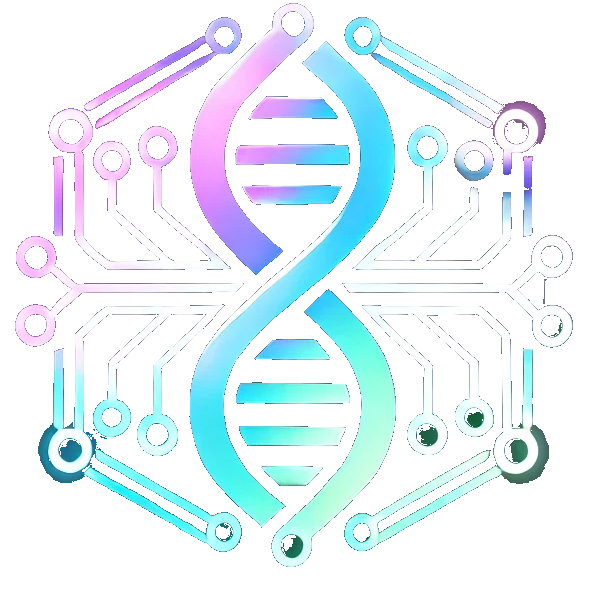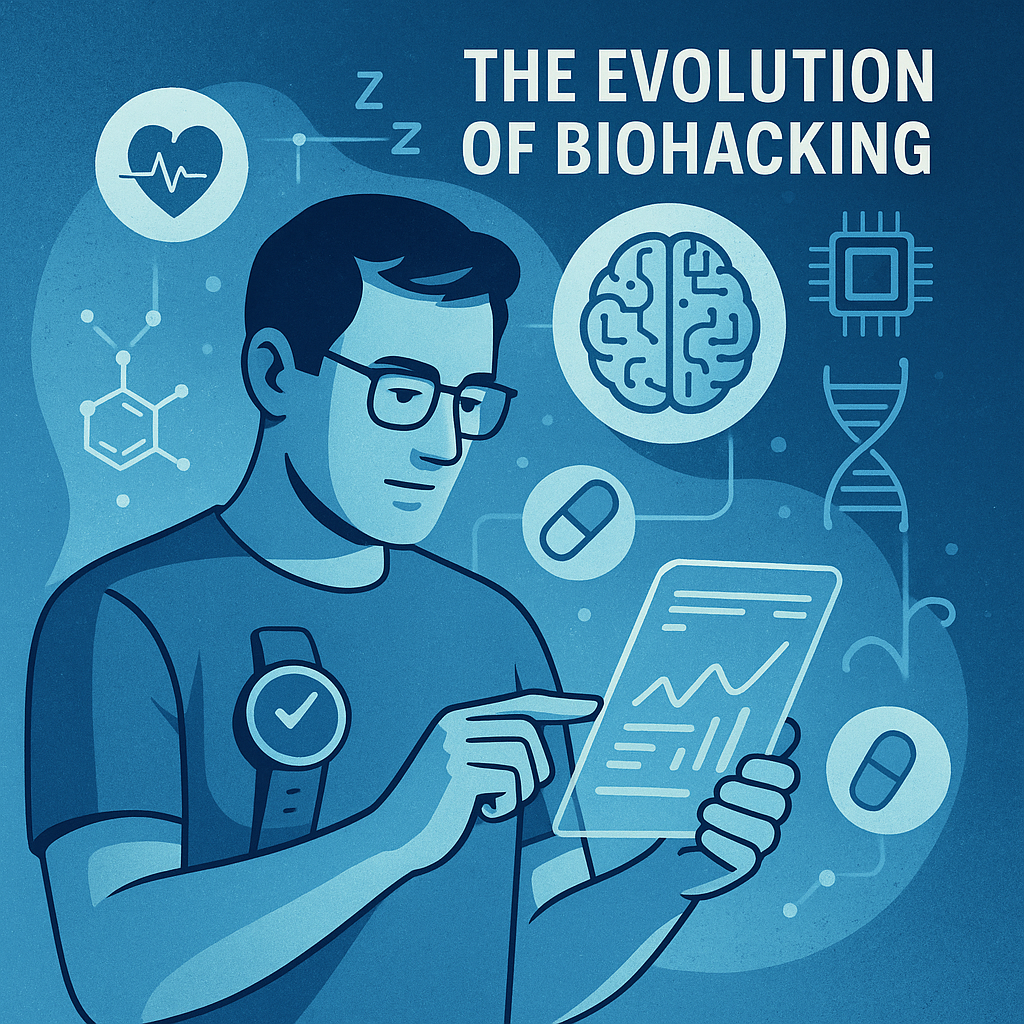Over the last two decades, biohacking has transitioned from a niche practice popular among tech enthusiasts and health experimenters into a mainstream phenomenon influencing our overall approach to health, performance, and longevity. This shift is the result of a deliberate intersection of technological breakthroughs, cultural evolution, and growing disenchantment with conventional healthcare models. As society gravitates toward self-optimization, biohacking offers an appealing and empowering approach to proactively managing personal health, albeit with risks that demand careful consideration.
The Evolution of Biohacking
Biohacking is broadly characterized as using scientific insights, technological tools, and personal experimentation to enhance physical and cognitive performance. Its origins date back to the Quantified Self movement of the early 2000s, which promoted the meticulous tracking of personal health metrics like steps, calorie intake, and sleep patterns. The landscape of biohacking has since dramatically expanded, driven by advancements in wearable technologies, accessible biotech, and the rapid proliferation of internet resources. Today, everyday individuals can access tools and health data previously exclusive to specialized laboratories and medical professionals.
Influential Figures and Cultural Impact
The mainstreaming of biohacking is largely credited to influencers such as Dave Asprey, who popularized the term and introduced transformative practices like Bulletproof Coffee and the ketogenic diet. Furthermore, thought leaders like Tim Ferriss, Dr. Rhonda Patrick, Dr. Peter Attia, and Dr. Andrew Huberman have significantly contributed to its popularization, utilizing platforms like podcasts, YouTube, and social media to translate complex scientific data into actionable insights for everyday wellness.
Key Areas of Modern Biohacking
Today’s biohacking embraces numerous approaches ranging from simple lifestyle adjustments to sophisticated technologies like implants and genetic modifications. Here are 20 core biohacking practices and their recent developments:
- Cognitive Enhancement
- Rising popularity due to increasing cognitive demands, featuring nootropics (smart drugs), adaptogens, and neurofeedback systems for enhanced memory, creativity, and productivity.
- Sleep Optimization
- Innovations include sophisticated sleep-tracking devices, personalized supplementation like melatonin, magnesium, and environmental modifications (e.g., cooling mattresses and blue light filters).
- Metabolic Health
- Continuous glucose monitors (CGMs) have become widespread, facilitating real-time tracking of blood sugar levels to tailor individualized dietary protocols and metabolic strategies.
- Physical Fitness
- Advances in wearable tech from WHOOP, Oura Ring, Garmin, and Apple Watch enable precision in tracking fitness, recovery metrics, and performance optimization.
- Personalized Nutrition
- Leveraging DNA tests, microbiome profiling, and blood analyses to develop highly customized dietary plans addressing individual health requirements and goals.
- Intermittent Fasting
- Widely adopted protocols such as 16:8 and OMAD (One Meal a Day) are increasingly validated by research linking fasting to improved metabolic markers, weight management, and enhanced longevity.
- Longevity & Anti-Aging
- Growing interest in supplements like NMN, NAD+, resveratrol, and lifestyle strategies designed to reduce biological age and enhance healthspan.
- Supplementation & Nootropic Stacks
- Complex personalized regimens incorporating vitamins, amino acids, adaptogens, and cognitive enhancers to support various health objectives.
- Breathwork & Oxygen Optimization
- Popular techniques include the Wim Hof Method and carbon dioxide tolerance training, promoting mental clarity, stress reduction, and improved athletic performance.
- Cold & Heat Therapy
- Methods such as cryotherapy, cold plunges, and infrared saunas stimulate beneficial stress responses (hormesis), reducing inflammation and enhancing overall wellness.
- Genetic & Epigenetic Optimization
- Advances in genetic testing (23andMe, AncestryDNA) and epigenetic age tests enable precise health interventions based on individual genetic profiles.
- Hormonal Health
- Monitoring and managing hormonal balance through lifestyle modifications, natural supplements, and therapies addressing testosterone, cortisol, thyroid, and estrogen optimization.
- Quantified Self & Data Tracking
- Utilizing comprehensive data analysis from wearable technology, medical tests, and apps to refine personal health strategies and identify health trends.
- Stress Reduction & HRV Training
- Heart rate variability (HRV) tools, meditation apps, and mindfulness practices have grown in importance as effective methods to combat chronic stress and enhance resilience.
- Meditation, Mindfulness & Neurofeedback
- Incorporation of meditation, mindfulness apps, and neurofeedback devices (e.g., Muse headbands) to support cognitive function, emotional stability, and mental wellness.
- Wearable Technology
- Continued advancement in devices for real-time health monitoring, empowering users to proactively manage health behaviors and track a variety of biological markers continuously.
- Gut Health & Microbiome Balancing
- Enhanced focus on gut-brain axis research has propelled the adoption of probiotics, prebiotics, microbiome testing, and dietary adjustments to optimize gut health and overall immunity.
- Brain Stimulation & Neurotechnology
- Emerging tools like transcranial direct current stimulation (tDCS) and EEG-based neurofeedback devices are increasingly employed to enhance cognitive function and address neurological conditions.
- Environmental Biohacking
- Attention to optimizing external environments including air and water quality, lighting conditions, and electromagnetic exposure for better health outcomes.
- Sexual & Reproductive Health
- Growing use of data-driven approaches and regenerative therapies to enhance reproductive health, libido, hormonal balance, and overall intimacy.
Societal Trends Fueling Biohacking
Biohacking’s rapid ascent can be linked to several broader societal trends:
- Distrust in Conventional Healthcare: Rising healthcare costs and prevalence of chronic diseases have motivated individuals to seek alternative self-management strategies.
- Technology Accessibility: Widespread availability of affordable diagnostic tools and wearables has democratized health management.
- Wellness Industry Expansion: The booming global wellness economy has reinforced consumer investment in preventative and proactive health practices.
- Aging Population: An increasing older demographic actively seeks ways to enhance longevity and healthspan.
- Flexible Work Arrangements: Remote work structures offer more autonomy for personalized health routines aimed at maximizing productivity.
- Information Availability: The abundance of accessible health content via podcasts, YouTube, and social media has empowered public engagement with complex scientific topics.
Conclusion: The Future of Biohacking
Biohacking signifies a fundamental shift from passive health management to active participation. It represents an empowered stance where individuals take proactive measures to optimize health rather than solely relying on reactive healthcare solutions. As innovation in biotech, wearable devices, and AI-powered diagnostics accelerates, biohacking’s next decades promise groundbreaking developments. Nonetheless, it remains essential for practitioners to uphold rigorous scientific standards, carefully evaluate risks, and embrace evidence-based practices to ensure safe and effective biohacking.



